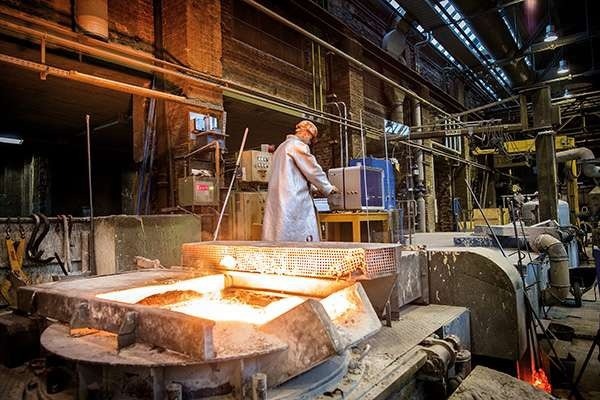The cost and performance of commercial spark optical emission spectrometer (OES) instruments depends on many things, including the type of detector technology employed in the instrument.
Recently, complementary metal oxide semiconductor (CMOS) detectors have emerged as a superior alternative to a photomultiplier tube (PMT) and semiconductor-based charge-coupled device (CCD) detectors, which are still utilized in industrial settings.
The latest generation of OES analyzers incorporates CMOS detectors to offer enhanced flexibility and the capacity to provide customers with the most current software. This is why manufacturers, such as Hitachi, prefer CMOS detectors.

Image Credit: Hitachi High-Tech Analytical Science
OES Detector Technology
In simple terms, optical emission spectroscopy (OES) involves creating a localized plasma at the site of analysis and then analyzing the optical spectrum of this plasma to determine which elements are present in the sample. All OES detectors are required to detect these optical signals and convert them into measurable electrical signals.
However, the materials used for detection and the method of amplifying the photo-generated electrons into a measurable quantity differ among detector technologies. Historically, the preferred detector technologies for OES were either photomultiplier tubes (PMTs) or charge-coupled devices (CCDs).
PMTs are vacuum tubes that accelerate and amplify the generated electrons, while CCDs are an array of many light-sensitive pixels that are integrated into a complete semiconductor device that is connected directly to the detection electronics.
PMTs are highly specialized detectors that can detect the presence of a few specific elements with very low detection limits.
In contrast, CCDs can detect a wider range of elements but at lower sensitivity levels, making them less suitable for applications such as melt analysis, where the control of tramp and trace elements to very low limits is crucial.
CMOS Chip for Light Detection
CMOS technology is a widely used semiconductor topography technology that is known for its high speed and minimal static power dissipation in integrated circuits. This allows for more devices to be integrated into a small space without the risk of overheating.
Consequently, CMOS-based devices, such as microprocessors, RAM, and ASICs, have become dominant in modern technology.
When used for light detection, CMOS devices function similarly to CCDs. They have an array of photosensitive pixels that convert incident light across various wavelengths into electrical signals.
Although CMOS technology is not new, recent developments have made it more efficient and less noisy for optical applications.
CMOS production is widespread, which makes it relatively inexpensive compared to specialist CCD manufacturing. Consequently, camera manufacturers are increasingly choosing CMOS technology over CCD for the image capture component of their DSLRs.
The CMOS chip also possesses fast multiplexed readout electronics, making it suitable for applications where speed is critical, such as in analytical tasks.
Hitachi’s OE Series
The OES instruments developed by Hitachi utilize CCDs (charge-coupled devices) as their detector type, except for the latest OE Series, which uses CMOS detectors. Both detector types are semiconductor-based and can be adapted to cover the full spectrum within optical systems.
The OE Series integrates the range and sensitivity of CMOS-based detectors with a new optical design to deliver a level of performance that was previously only achievable with much more expensive instruments.
In addition, the OE Series has low operating costs and a relatively small footprint while still being capable of detecting the entire spectrum of elements within metals, including gases, such as in the OE 750.
For the OE720, the covered wavelength is 174-690 nm, whereas for the OE750, the CMOS detector covers 119 nm up to 766 nm, making it capable of analyzing all the relevant elements within metals from hydrogen upwards.
This is due to the high resolution, dynamic range, and linearity of CMOS detectors, which are optimized for measuring UV light and can also be used for TRS (time-resolved spectroscopy).

This information has been sourced, reviewed and adapted from materials provided by Hitachi High-Tech Analytical Science.
For more information on this source, please visit Hitachi High-Tech Analytical Science.